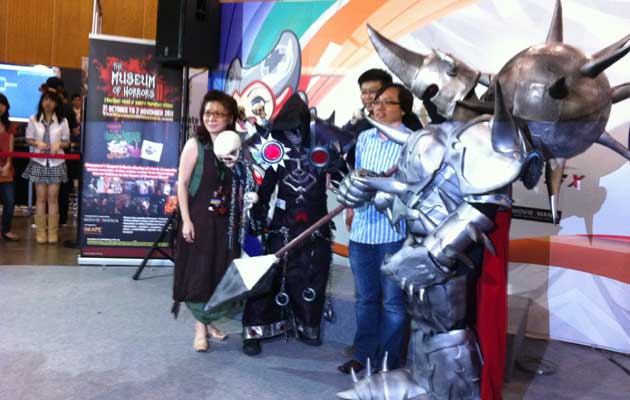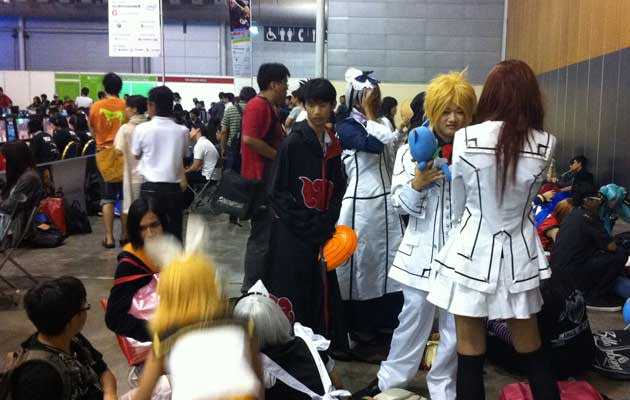Cosplay gaining popularity in Singapore

In a society where video games and Japanese manga are increasingly popular among the youth in Singapore, many are still deterred from getting into "cosplay" (short for costume play).
Some people even scoff at the activity, as hobbyists often don in overly fanciful costumes and accessories, mimicking their favorite anime or video game character.
Cosplayers, on the other hand, say the general misconception that cosplay is nothing more than putting on a costume needs to be dispelled.
"Cosplayers are performance artists, and it's no different from watching a period drama, or a fantasy film, except instead of sitting in the comfort of your own home or in the cinema, you're seeing it happen at a convention in the flesh," said 29-year-old Jason Koh in an interview with Yahoo! Singapore.
The pop culture blogger was the winner of the Cos X cosplay competition at TGX 2011 held at Singapore Expo on 10 September. His splendid masquerade skit emulating the of warlock character class from the World of Warcraft clinched him the first prize of $1,000 in cash.
However, he noted that a line has to be drawn as to how far a cosplayer should dress.
"Of course, cosplayers should also be aware of what is considered tasteful, and this is something that is instilled with age, maturity and exposure," he added.
The local cosplay culture was first embraced in 2000, and has slowly gained positive traction in terms of its popularity, a stark contrast to the explosive growth in the number of video gamers and anime enthusiasts here.
The main reason behind the disparity could be due to the conservative attitude of many Singaporeans. Throwing aside your usual self and dressing up as a fantasy character appears to be a "no-no". Price factor also plays a role in discouraging people from picking up such a geeky hobby.
Cosplayer Maverick Villenguez spends an average of $250 for a costume, and a complicated semi-armored suit could easily fetch $500. Another hobbyist Rian Nelson pays about $90-$250 for his wigs and costumes, and purchases them from TaoBao, a Chinese online auction and shopping website. Otherwise, he would tailor or hand-sew them.
However, in recent years, people are starting to accept cosplayers and attending anime conventions and Japanese pop-culture events like the Teenage Big Day Out and EOY. The rising trend has even spurred the creation of cosplay-orientated cafes, where waitresses serve customers in a Japanese doll-like personality.
Estimates put the number of cosplayers in Singapore in the thousands range, though the figure is still a far cry than that of in Japan, where a street is dedicated to enthusiasts and shops selling cosplay apparel and accessories are prevalent. The World Cosplay Summit is held annually in Higashi-ku, Nagoya, Japan.
What makes cosplay so appealing?
It promotes creativity and brings about fun and entertainment at the same time. As Jason Koh puts it, "Cosplay is more just an expression of fandom; it is a discipline infused with theatrical and performance art forms, and invariably, if you're creating your own outfits, equips you with some very practical skills in art, craft and design."
While the government has been actively advocating the importance of art and culture in our society, there seems to be a little effort to increase awareness of Japanese cosplay. Most cosplayers hope more could be done to promote their hobby to the masses.


